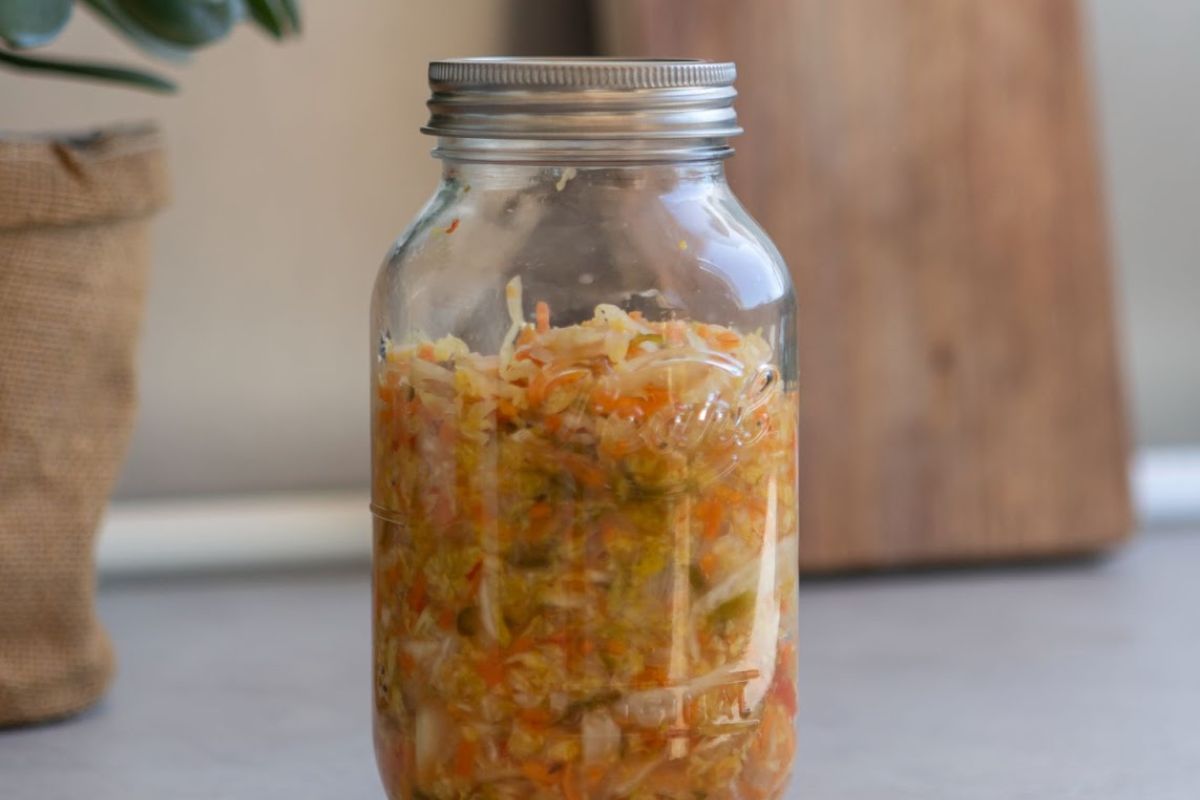Winter fermentation: can you ferment vegetables in the winter?

Enjoy the art of fermentation no matter the season! Even in the winter months, when the weather cools down and root vegetables come into season, you can still continue experimenting with winter fermenting recipes. Fermenting your Winter vegetables will not only help you prevent unnecessary food waste, but it can also help you save money and extend the lifespan of your ingredients to help them last longer.
New to fermentation? Remember to avoid basic mistakes. Check our blog post Fermenting foods for beginners! Avoid these 3 mistakes learn more!
Why should you ferment vegetables in the winter?

Winter fruits and veggies are full of minerals, vitamins, and essential amino acids that are important for a healthy and balanced lifestyle. Winter fermentation recipes are an amazing way of preserving and storing these healthy foods to be consumed throughout the year. Winter fermentation recipes are helpful because:
- Extend the life of your food: Winter fermentation of vegetables helps to lower food waste and extend the lifespan of your ingredients. This is a great way of creating space and more efficiently organising your pantry for the Winter.
- Digestion Support: Winter fermentation is a great method for helping your vegetables to become more digestible. Once your winter fermentation process is complete, more probiotics will be added to the nutritional value of your vegetables.
- Slower fermenting = bigger flavour: As the process of fermenting your Winter veggies can be slower, the spices and aromatics have more time to infuse and greatly transform the flavour and food profile of your ferments.
- Preservation of nutrients: Winter fermentation is going to help you to preserves and support the nutritional impact of your ingredients. This is important in the Winter for helping reinforce our immune systems to keep us healthy against cases of flu and colds.
What to remember about Winter fermentation recipes

For recipes that generally ferment quickly, such as fermented fruits or sourdough bread, colder Winter weather can impact this. It means that you may need to position your Winter fermentation recipes closer to a heat source to support the usual Lacto-fermentation process. This will ensure that the necessary bacteria can multiply to result in your finished fermentation.
Your Winter ferments are home to billions of beneficial microorganisms, such as Lactobacillus acidophilus, which work together to restore and maintain a vibrant ecosystem of intestinal flora that supports your overall gut health and digestion.
Fermentation methods
There are three main methods when it comes to food and beverage fermentation in general:
Lactic acid fermentation
Probably the best-known and most common fermentation method is lactic acid fermentation. It is one of the easiest methods of home preservation. During this process yeast strains and bacteria convert starches or sugars into lactic acid, requiring no heat in preparation. In these anaerobic chemical reactions, pyruvic acid uses nicotinamide adenine dinucleotide + hydrogen (NADH) to form lactic acid and NAD+. This method is applied when making sauerkraut, pickles, kimchi, yoghurt, and sourdough bread.
Ethanol fermentation or alcohol fermentation
Ethanol fermentation, also called alcoholic fermentation, is a biological process which converts sugars such as glucose, fructose, and sucrose into cellular energy, producing ethanol and carbon dioxide as by-products.
Ethanol fermentation is the basis for alcoholic beverages, ethanol fuel and bread dough rising.
Acetic acid fermentation
Acetic acid is produced by fermenting various substrates (starchy solutions, sugar solutions or alcoholic foodstuffs such as wine or cider) with Acetobacter bacteria. Starches and sugars from grains and fruit ferment into sour-tasting vinegar and condiments. The group of Gram-negative bacteria capable of oxidising ethanol to acetic acid is called acetic acid bacteria (AAB). These are widespread in nature and play a key role in the production of food and beverages, such as vinegar and kombucha.
What are the best fermentation methods for Winter?
Lactic acid fermentation is the process used for Winter fermentation recipes, however, Lacto fermented vegetables will take longer to ferment during the colder months due to the drop in temperature. This longer process benefits the vegetables, helping to give them a longer infusion process and a deeper flavour profile. The cooler temperature in our basements and pantries can also help in the long-term to store and preserve our ferments well into the Summer season.
However, to help to accelerate the process so that we don’t need to wait too long to eat our delicious ferments, we increase the temperature to about 21 to 26 degrees Celcius, this way our Winter ferments can be ready within 2 to 6 weeks. This is a convenient alternative to waiting several months! Here are some tips to help you with Winter fermentation:
- Placing your ferments in a hot water cupboard
- Store them high up on a shelf in a warm part of your house
- Try using a slow cooker with adjustable temperatures
- Store them on the fridge or above the oven
- Insulating your Winter ferments in a small bin with warm water or a heated towel
- Wrapping your ferment with a hot towel
- Placing your ferment on a heating pad or using a heat belt
5 suggestions for winter fermentation recipes
Fermented beetroots
Lacto-fermented beets are a pleasant balance of sour and earthy-tasting goodness, and the process couldn’t be easier! All you need is a large canning jar, beets, some salt, filtered water, and whatever flavour additions you like
Fermented Celeriac
Despite its rather unusual texture as a vegetable, beneath the surface of celeriac’s skin is a crunchy, and slightly sweet flesh. The taste is similar to celery, turnip, and broccoli, but much more delicate. Fermented celeriac develops interesting aromas during the fermentation process.
Lacto fermented carrots
Carrots are one of the most popular root vegetables! Following cabbage, they are one of the easiest vegetables to ferment and are wonderful for their versatility. They can be found in vegetable mixes or fermented on their own, in any shape you prefer: shredded, in sticks or even in ribbons.
Fermented Daikon or Daikon Kimchi
Daikons and other radishes are great for maintaining their crunchiness and are packed with vitamins, even in Winter. During fermentation, these large roots retain their delicate flavour but lose their spiciness a little. Ferment them alone or with a Daikon kimchi.
Water kefir
Fermented drinks are a great addition to a plant-based diet, as they introduce live bacteria to your gut and keep it in balance. Water kefir is a drink favored for both its carbonated flavour and impressive health benefits. Besides containing many probiotics, this tasty drink has also been shown to support immunity and improve overall health.
Looking for fermentation jars?
For fermentation we recommend our Mariposa Jar, that takes inspiration from vintage swing-top jars, used in the 60s for preserving home cooked food and boasts an elegant design for timeless usage. Mariposa’s ability to combine a lightweight design with the robustness of a perfect vacuum is a phenomena we at Pearl call the “Butterfly effect”.

What about you? Have you ever faced difficulties fermenting in winter? Share in the comments!









